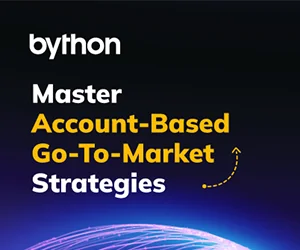Guest Contribution by Dan Cormac
As a startup, you will have a number of expenses that need to be covered. You will likely need to purchase stock. A business website is a necessity these days. Then there’s also rent, utilities, office supplies, employee wages, and so on.
With so many other expenses, it can be easy to overlook – or undervalue – your marketing budget. Yet your advertising strategy is arguably more important than any other facet of your business. This is particularly the case for a startup. You’re an unknown in the world of established brands, and you need to make a big splash to get noticed.
As a result, you need to craft a budget that will do justice for your promotional efforts. For assistance, here’s a quick guide on developing a marketing budget for your startup:
Why Do You Need a Marketing Budget?
As mentioned above, when you start a business, you are unknown. Those who you want to attract to your products or services have no idea who you are and how you can help them. While you can visit individual stores and phone up potential clients, sometimes these tactics can be met with a disinterest in your brand. Cold calling can feel intrusive, even if it does win customers from time to time. However, with clever marketing, you can place your business in front of those you want to find you, without intruding on their time.
Without a marketing budget, however, you run the risk of overspending, and you may not reap the benefits of doing so.
Follow the steps below on how to develop the best budget for your startup
-
Determine Your Finances
First up, you need to determine your overall finances for your startup. Only then can you delegate a certain amount for your marketing budget – although the specific figure will need to be fine-tuned. Your marketing budget must be part of a wider business plan. If not, you may not leave enough money in your business account for other, equally as important tasks.
If you are struggling to find any money for your planned marketing endeavors, there is an option available: financing. For example, you could acquire a loan to get your marketing efforts up and running. Even if your credit rating isn’t in the best shape currently, bad credit payday loans are available.
What’s more, you need to apply a certain level of flexibility to your marketing budget. While it’s crucial not to overspend, sometimes you may need to invest a little bit more than planned originally, in order to create something extra special.
-
Research Your Customers
How can you target those who need to see your business without key research beforehand? Before rushing ahead and investing in expensive TV commercials, for example, you need to know that your customers will actually be in front of their TVs. If you are marketing to a younger audience, it may be wiser to focus on social media marketing, using your budget to post targeted ads on Facebook and Instagram.
To research your customers, ask the following questions:
- What age group do you intend to target? Is it an older audience, those who are retired, or young professionals?
- Where are your target customers based? Are you a local business or a national company? Do your customers reside in cities or are they rural-based?
- Does your target audience favor a particular brand or company? For example, if you are a new food brand, do they regularly interact with Ben & Jerry’s? Do they buy most of their outfits from Hollister? By understanding where their current loyalties lie, you can use this knowledge to tailor the marketing with a similar tone of voice, colors, and so on.
-
Decide on Marketing Routes to Take
When it comes to marketing a business, you are spoilt for choice. There are many different methods available for getting the word out. It’s up to you to decide which would be the best fit for your brand.
An obvious starting point is with online marketing. Due to how people are regularly on the Internet, it makes sense to target them with the likes of social media, email marketing, pay-per-click (PPC), and website content.
However, physical advertising techniques shouldn’t be avoided. In fact, it’s advised to try and have a healthy mix of both online and physical marketing methods.
It is also essential to remember that some marketing channels are free. Creating a business Facebook page is free, as is creating a business Twitter account. However, social media channels aren’t the only free resources. MailChimp offers low volume email marketing, although you will need to upgrade to an account you pay for to reach a wider audience.
-
Understand Current Trends
Understanding consumer behavior and the latest trends is integral for developing an effective marketing strategy.
You have to keep in mind the world of marketing is a dynamic one, and it’s forever changing its shape. You only have to look at the recent trend of mobile overtaking desktop for Internet browsers. Statista points out that, in February 2020, mobile devices accounted for 52% of worldwide web page views. There are also SEO changes, advances in technology, social media trends, etc. that you need to be aware of for your business.
-
Analyze Your Success Rate
In the end, you can only gain an accurate figure for your marketing budget by analyzing the results. The statistics you should be studying include:
- The number of visitors your website receives each month
- The number of leads you are generating each month
- The percentage of visitors that are turning into leads each month
- The number of impressions and responses to your social media posts, emails, and other marketing efforts
By taking a closer look at the numbers, you will be able to gauge which advertising techniques are working – and the ones that need scrapping. This will, ultimately, help you fine-tune your marketing budget.
Final Thoughts
Marketing is no longer a desirable aspect of a business; it’s a necessity. Without customers, your business won’t just falter; it’ll fail. Marketing enables you to reach those potential customers and to turn them from ‘maybes’ into loyal customers who return time after time.
***
Dan Cormac knows how to make his money go further. A freelance financial journalist, Dan is passionate about personal finance. Whether you hope to escape the chains of debt, to save for a house, or to retire within a decade, Dan explores the most effective ways you can achieve your financial goals.




